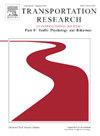儿童在学校区域的安全-系统审查
IF 3.5
2区 工程技术
Q1 PSYCHOLOGY, APPLIED
Transportation Research Part F-Traffic Psychology and Behaviour
Pub Date : 2025-05-23
DOI:10.1016/j.trf.2025.05.020
引用次数: 0
摘要
由于空间和认知能力有限以及冲动行为倾向,年轻行人在行走或过马路时需要大量的指导和监督。这些限制,再加上学区内复杂的交通动态,增加了他们对道路交通事故的脆弱性。常见的问题包括缺乏交通规则意识、儿童突然进入道路、追尾碰撞和交通延误。因此,综合评估学校道口及周边地区的安全情况是必要的。虽然发达国家已经引入了严格的法规、改善的基础设施和先进的技术来改善学校区域的安全,但发展中国家仍然在与混乱的交通状况、基础设施不足、意识有限和儿童行人受伤率高等问题作斗争。本综述整合了53项研究的结果,这些研究采用PRISMA(系统评价和荟萃分析的首选报告项目)方法,从Web of Science、b谷歌Scholar、ScienceDirect和Scopus等数据库中提取。这些研究包括行为因素、社会人口影响、建筑环境特征,以及影响儿童在学校区域安全的交通相关方面。主要研究结果强调,冒险行为随着年龄和同伴互动的增加而增加,尤其是在下午。由于执行情况和当地情况的不同,过境警卫的作用显示出好坏参半的效果。虽然基础设施要素和交通平静化措施始终与提高安全性有关,但其有效性因地区而异。安全干预措施显示出良好的效果,但需要持续监测。该审查还表明,低收入和中等收入国家缺乏纵向研究和针对具体情况的解决方案。研究结果为未来的研究和政策提供了基础,鼓励以儿童为中心的道路设计和强有力的、可持续的干预措施,以改善学区的安全。本文章由计算机程序翻译,如有差异,请以英文原文为准。
Safety of children in school zones − A systematic review
Young pedestrians require substantial guidance and supervision while walking or crossing roads due to their limited spatial and cognitive skills and tendency for impulsive behaviour. These limitations, combined with complex traffic dynamics in school zones, increase their vulnerability to road traffic incidents. Common issues include a lack of awareness of traffic rules, sudden road entries by children, rear-end collisions, and traffic delays. Therefore, it is essential to comprehensively assess safety scenarios around school crossings and vicinities. While developed countries have introduced strict regulations, improved infrastructure, and advanced technologies to improve school zone safety, developing nations continue to struggle with disorderly traffic conditions, inadequate infrastructure, limited awareness, and high child pedestrian injury rates. This review integrates findings from 53 studies selected using the PRISMA (Preferred Reporting Items for Systematic Reviews and Meta-Analyses) approach, drawing from databases such as Web of Science, Google Scholar, ScienceDirect, and Scopus. The studies cover behavioural factors, sociodemographic influences, built environment features, and traffic-related aspects affecting children’s safety in school zones. Key findings highlight that risk-taking behaviours increase with age and peer interaction, especially during the afternoon hours. The role of crossing guards shows mixed effectiveness due to variations in implementation and local context. While the infrastructure elements and traffic calming measures are consistently associated with improved safety, their effectiveness differs across regions. Safety interventions show promising results but require continuous monitoring. The review also reveals a lack of longitudinal studies and context-specific solutions in low- and middle-income countries. The findings offer a foundation for future research and policy, encouraging child-centred road design and robust, sustainable interventions for improving school zone safety.
求助全文
通过发布文献求助,成功后即可免费获取论文全文。
去求助
来源期刊
CiteScore
7.60
自引率
14.60%
发文量
239
审稿时长
71 days
期刊介绍:
Transportation Research Part F: Traffic Psychology and Behaviour focuses on the behavioural and psychological aspects of traffic and transport. The aim of the journal is to enhance theory development, improve the quality of empirical studies and to stimulate the application of research findings in practice. TRF provides a focus and a means of communication for the considerable amount of research activities that are now being carried out in this field. The journal provides a forum for transportation researchers, psychologists, ergonomists, engineers and policy-makers with an interest in traffic and transport psychology.

 求助内容:
求助内容: 应助结果提醒方式:
应助结果提醒方式:


